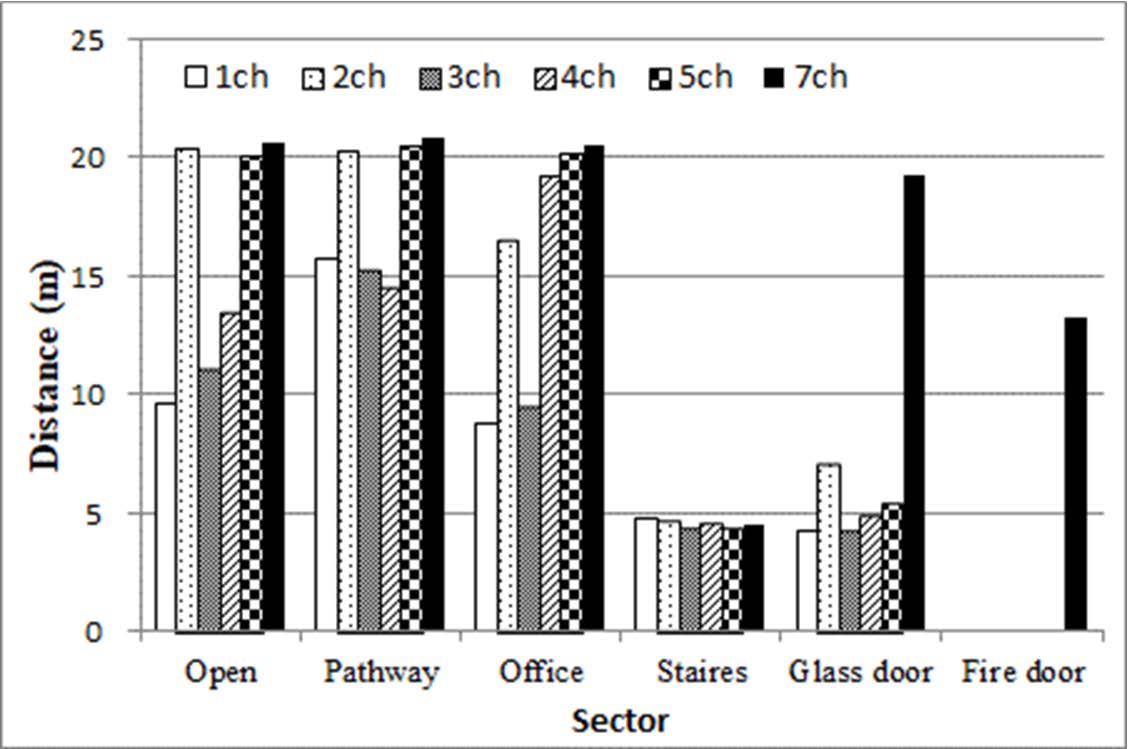When an earthquake or a large fire has occurred, it is difficult to secure communication networks for rescue in the building due to the destruction of commercial communication networks. Although analog radio systems such as VHF (very high frequency) and UHF (ultra-high frequency) are used for rescue operation in general, communication failure occurs in closed spaces, causing difficulties in smooth rescue operations. When the communication infrastructures have been destroyed in a building in the disaster, an emergency wireless telecommunication environment should be constructed to secure a safer disaster response environment. In this study, along with comparison of the performances of diverse communication frequencies, UWB (Ultra-Wide Band) wireless telecommunication networks were evaluated under five building indoor environment conditions including open spaces. UWB communication modules were fabricated to satisfy the IEEE (The Institute of Electrical and Electronics Engineers) 802.15.4a standard performance to measure distances in which communications are possible according to the indoor environment for each of six channels with different UWB communication frequencies. The results indicated that the distances in which communications are possible for each the six channels were average 15.5 m, maximum 20 m in open spaces; average 17.33 m, maximum 20 m in corridors; average 15.3 m, maximum 20 m in indoor office environments with office fixtures; average 4.33 m, maximum 6 m in vertical spaces of stairs; and average 6.5 m, maximum 17 m in closed horizontal spaces with a fire door. In this case, the communication performance and distance performance were shown to be the most excellent at a frequency (Centre Frequency) of 6489.6 and a band of 5980.3 – 6998.9 MHz, which is UWB 7ch. In conclusion, it is judged that if UWB communication modules are installed in the disaster area at intervals of 20 m and multi-channels are used, communication environments can be constructed even in closed spaces

